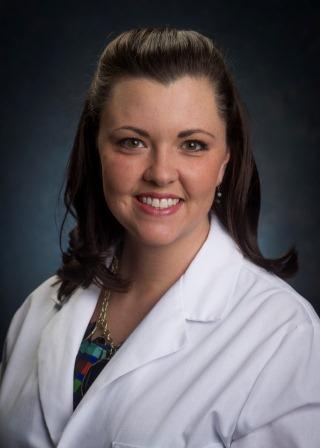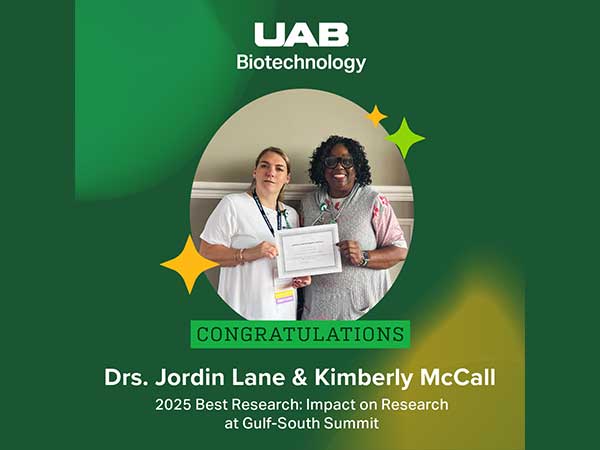 When the University of Alabama at Birmingham Clinical Cytogenetics Laboratory decided to hire their first ever genetic counselor they started by meeting with prospective applicants at the 2012 National Society of Genetic Counselors conference in Boston - the logical place to find the best genetic counselors in the United States.
When the University of Alabama at Birmingham Clinical Cytogenetics Laboratory decided to hire their first ever genetic counselor they started by meeting with prospective applicants at the 2012 National Society of Genetic Counselors conference in Boston - the logical place to find the best genetic counselors in the United States. But as it turns out, to find the best they didn’t need to leave Alabama. Or Birmingham. Or UAB. Or University Boulevard. Dana Hollenbeck, who they eventually hired, was a second year student in the UAB Genetic Counseling Program located in the School of Health Professions Department of Clinical and Diagnostic Sciences – a mere three blocks from their headquarters in the Kaul Human Genetics Building.
“Dana was uniquely qualified for this position because of her training as a genetic counselor and her extensive clinical database management experience,” said Lynn Holt, MS, CGC, former director of the UAB GC Program. “She also benefited from having the opportunity to work with other UAB Laboratory Genetic Counselors during her graduate studies. This provided her with an understanding to the specific demands and value of the role within a clinical laboratory.”
As a graduate student Hollenbeck worked as a research assistant in the Children’s of Alabama’s pediatric Spina Bifida clinic on the CDC Spina Bifida patient registry demonstration project. She was responsible for data collection and entry, plus management of the registry. These are vital skills for her current position where she is doing research for an international study. She and her team are working to create an internal database for phenotype and genotype to match abnormalities found during chromosomal microarray testing with the phenotype that has been recorded in clinical notes.
“We compare test results to the physician’s notes to find out if there is a consistency between the type of abnormality the patient has and the clinical features that the physician sees,” said Hollenbeck. “Our goal is to help future physician interpretations and to provide a better understanding of specific abnormalities so we can more consistently classify abnormalities.”
Hollenbeck graduated in May 2013 and began work the next month. So far she has analyzed 400 cases. She has 600 more to go. However, that is not her only responsibility at the lab.
“One thing that is great about UAB is that those of us in a non-traditional role still have a clinical responsibility so we all participate in clinic and see patients,” said Hollenbeck. “The GC program here does a great job at training graduates for all types of positions in genetic counseling. We don’t just focus on traditional roles – which are solely clinic based – UAB provides exposure to the many other aspects of genetic counseling and that is an advantage other graduates don’t have.”
And that is why she chose UAB for school and for work.

